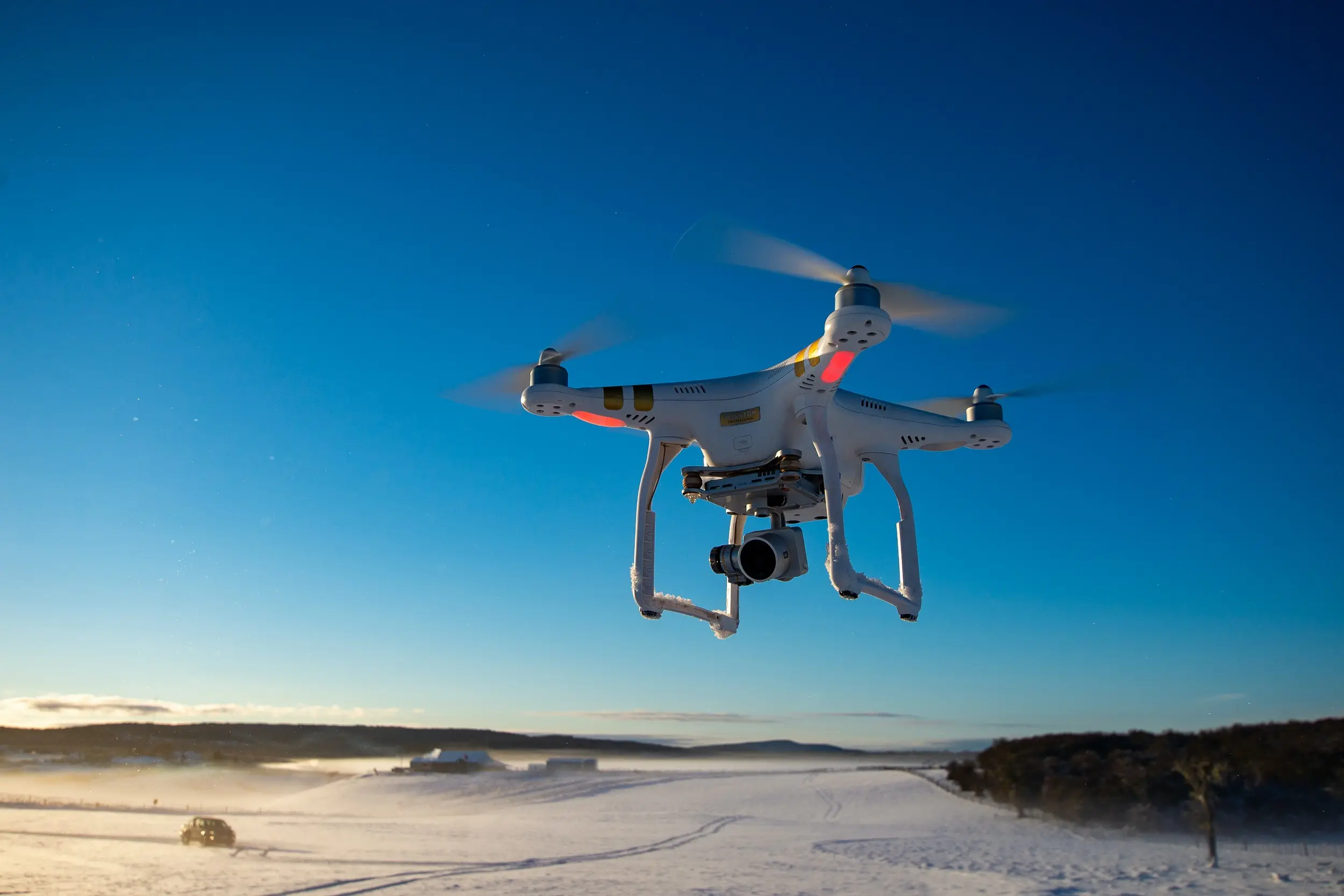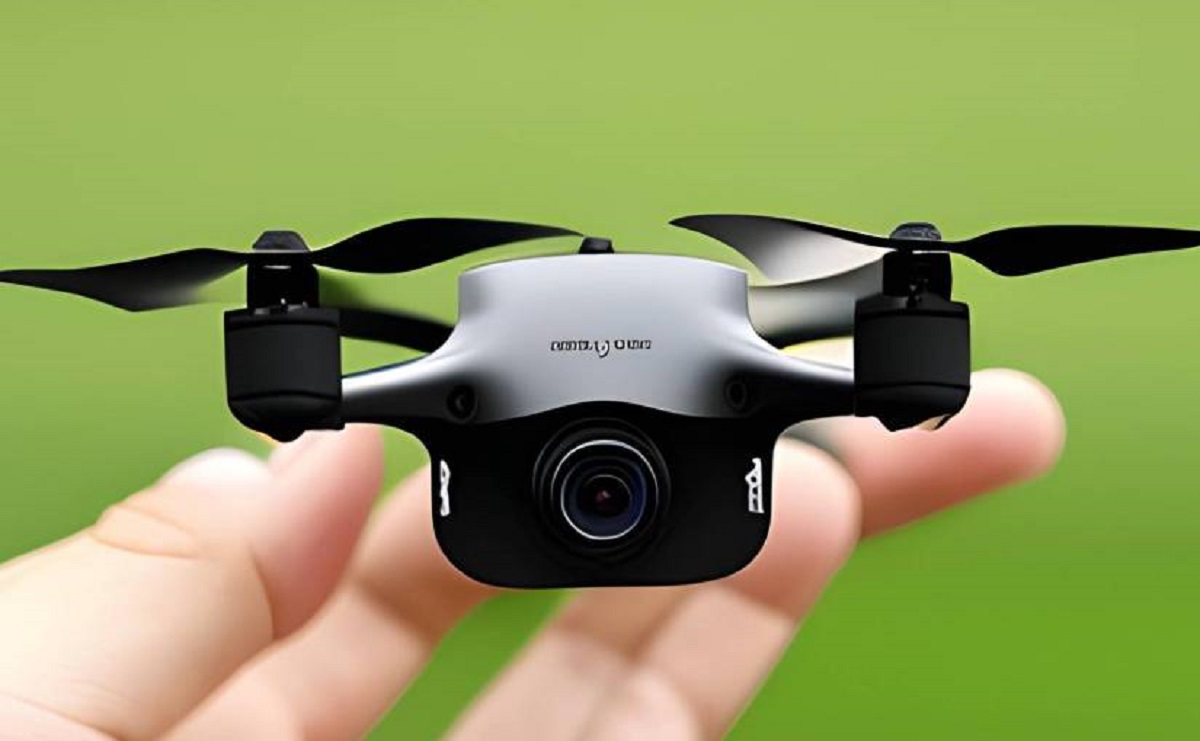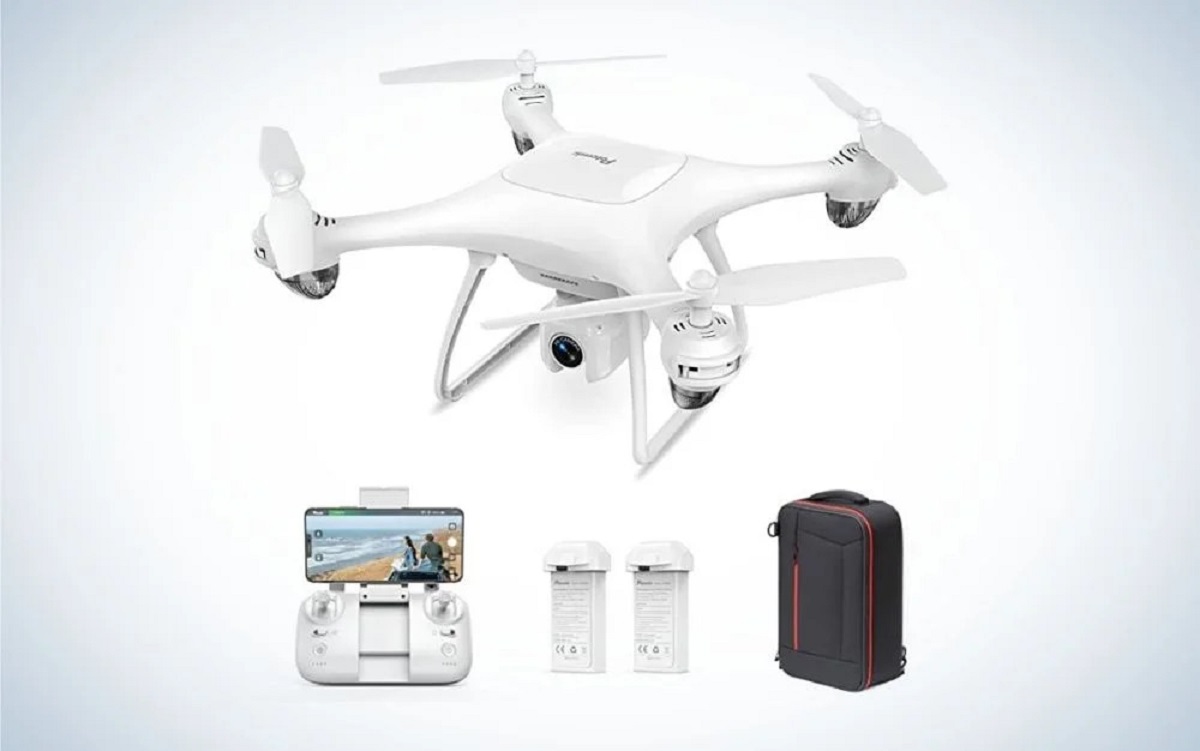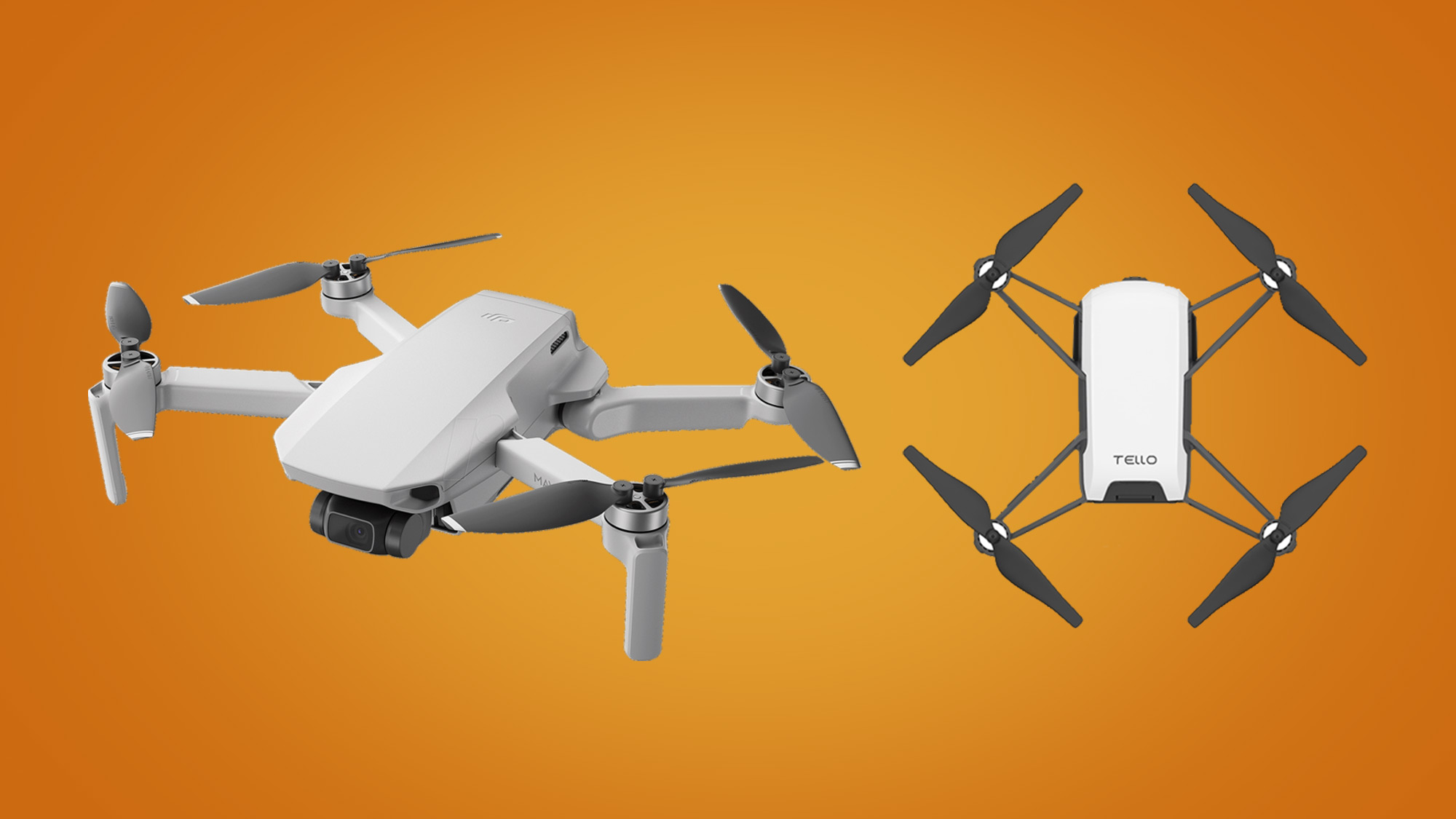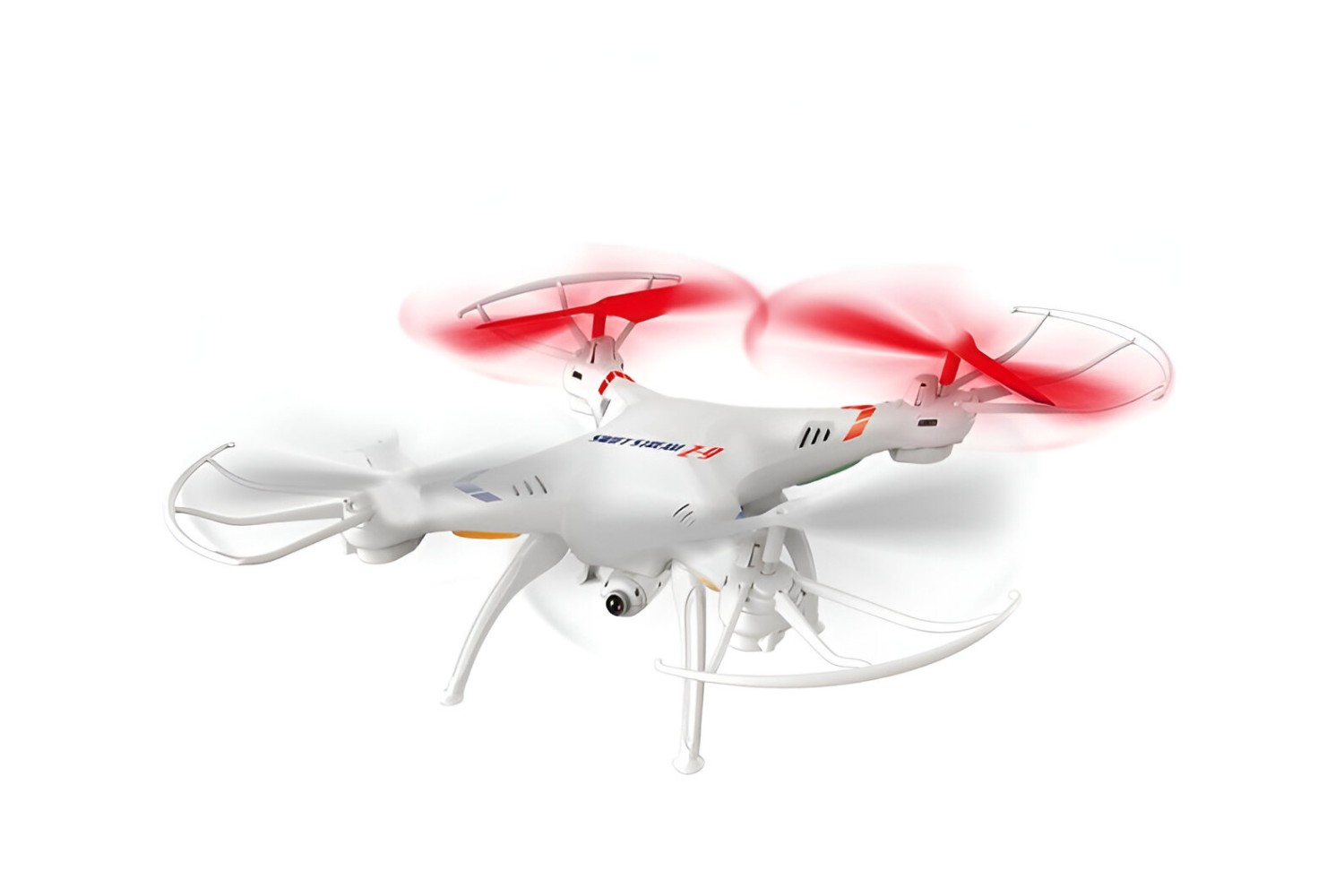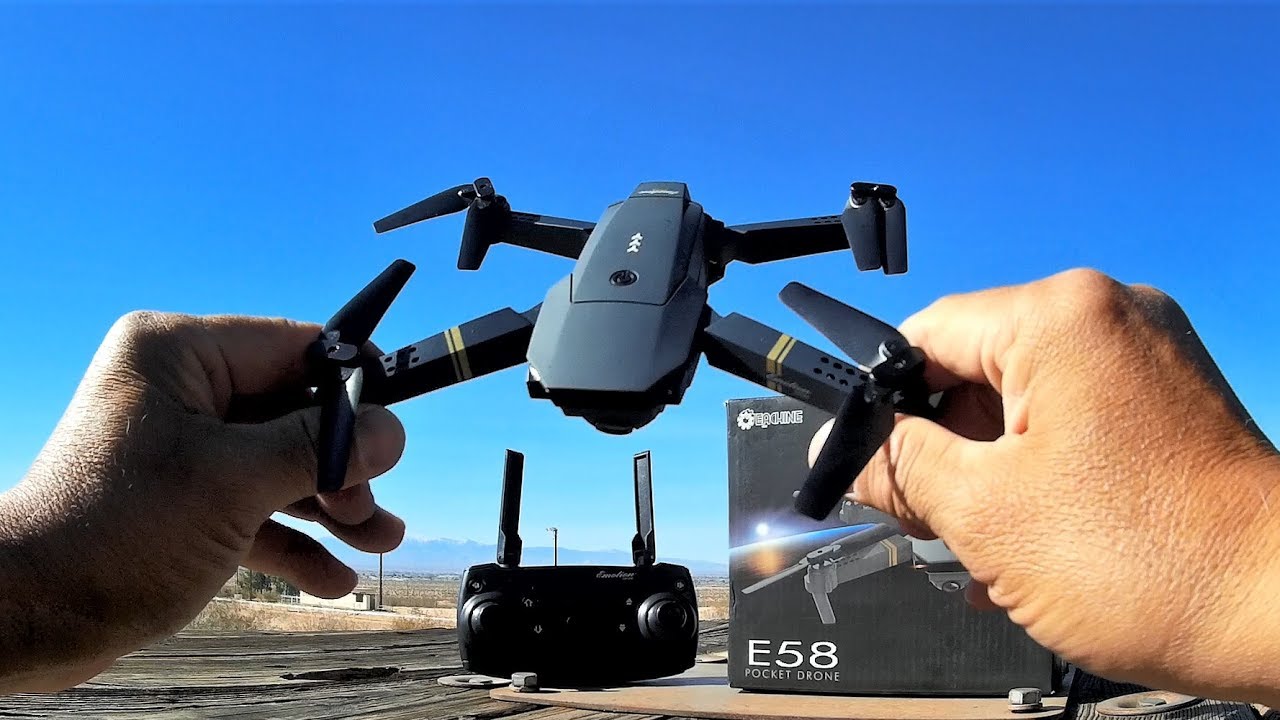Introduction
When it comes to flying drones, there are numerous features and modes that enhance the flying experience and offer greater control. One such feature is Headless Mode, which has gained popularity among drone enthusiasts and beginners alike. Whether you’re a seasoned pilot or just starting out, understanding what Headless Mode is and how it works can greatly enhance your drone flying skills.
Headless Mode, also known as “care-free” mode, is a feature found in many modern drones that simplifies the orientation and control of the aircraft. In traditional drone flying, the front of the drone is determined by the direction it’s facing, which can be confusing for beginners. However, with Headless Mode, the drone becomes more intuitive to control as it eliminates the need to worry about the drone’s orientation.
In this article, we will delve into the concept of Headless Mode, its benefits, and how to activate it on different drone models. We will also debunk common misconceptions about this mode and provide valuable tips for using Headless Mode effectively. Whether you’re a professional drone pilot looking to improve your flying skills or a novice seeking a simpler way to control your drone, understanding Headless Mode is a must. So, let’s dive in and explore the fascinating world of drone flying with Headless Mode!
What is Headless Mode?
Headless Mode is a flight mode feature available on many drones that simplifies the orientation and control of the aircraft. In traditional drone flying, the front of the drone is determined by its direction. This means that if the drone is facing a certain direction and you push the control stick to the right, the drone will move to its right side relative to its front. However, for beginners or those unfamiliar with drone flying, this can be confusing and may lead to misjudging the orientation of the drone.
Headless Mode eliminates this confusion by decoupling the drone’s direction from its physical front. When you activate Headless Mode, the drone will move relative to the remote controller’s direction, regardless of its own orientation. In other words, pushing the control stick to the right will make the drone move to your right, regardless of its physical orientation.
Headless Mode achieves this by utilizing the drone’s built-in gyroscopic sensor. This sensor constantly measures the drone’s orientation in relation to the Earth’s gravitational force, allowing the flight controller to adjust the drone’s movement according to the remote controller’s input, irrespective of the drone’s orientation.
It’s important to note that Headless Mode can differ between drone models, as certain drones may offer additional functionalities alongside the basic orientation control. For instance, some drones incorporate a “return to home” feature in Headless Mode, which ensures that the drone will automatically return to its initial take-off location when the mode is engaged.
By simplifying the control and orientation of the drone, Headless Mode allows beginners to focus more on maneuvering the aircraft rather than constantly worrying about its direction. However, it is crucial to familiarize yourself with the drone’s controls and practice flying in a controlled environment before attempting complex maneuvers or flying the drone in challenging conditions.
How does Headless Mode work?
Headless Mode works by decoupling the drone’s direction from its physical front, allowing for easier control and orientation. When you activate Headless Mode, the drone’s flight controller utilizes the gyroscopic sensor to determine its current orientation in relation to the Earth’s gravitational force.
When you push the control stick on the remote controller, the input is interpreted by the flight controller based on its own orientation, rather than the drone’s physical front. This means that if you push the stick to the right, the drone will move to your right, regardless of its current orientation.
Here’s a step-by-step breakdown of how Headless Mode works:
- Activate Headless Mode: Check the drone’s user manual or consult the manufacturer’s instructions to understand how to activate Headless Mode on your specific drone model.
- Gyroscopic Sensor Calibration: Before taking off, it’s essential to calibrate the drone’s gyroscopic sensor to ensure accurate orientation readings. This calibration process may involve placing the drone on a level surface and following the instructions provided by the manufacturer.
- Takeoff: Once the calibration is complete, you can take off the drone as you would in normal flying mode.
- Control Input: When you push the control stick to maneuver the drone, the flight controller interprets the input based on its own orientation rather than the drone’s physical front.
- Flight Adjustments: As the flight controller receives the control input and accurately determines the drone’s orientation, it adjusts the drone’s movement accordingly. This allows for intuitive control without having to consider the drone’s direction.
- Deactivating Headless Mode: To exit Headless Mode, consult the manufacturer’s instructions to understand how to deactivate it on your specific drone model.
It’s important to note that while Headless Mode simplifies control, it does not override other safety features or autonomous flight modes. Always abide by local regulations, maintain visual contact with the drone, and be aware of your surroundings to ensure a safe and enjoyable flying experience.
Benefits of using Headless Mode
Headless Mode offers several benefits that make it a popular feature among drone pilots. Whether you’re a beginner or an experienced pilot, here are some advantages of using Headless Mode:
- Simplified Orientation: The main benefit of Headless Mode is that it simplifies the orientation of the drone. It eliminates the need for pilots to constantly keep track of the drone’s front and adjust their controls accordingly. This can be particularly helpful for beginners who may find it challenging to grasp the concept of drone orientation.
- Easier Control: By removing the need to worry about orientation, Headless Mode makes controlling the drone easier and more intuitive. Pilots can focus on maneuvering the drone without the added mental effort of determining its direction of flight.
- Reduced Learning Curve: For individuals new to drone flying, Headless Mode can provide a smoother learning curve. It allows beginners to familiarize themselves with basic flight controls and gain confidence in controlling the drone before progressing to more advanced flying techniques.
- Enhanced Safety: Headless Mode helps prevent disorientation and reduces the risk of crashes caused by incorrect control inputs. This feature can be especially valuable when flying in challenging situations, such as in low-light conditions or when the drone is far away and difficult to visually orient.
- Improved Maneuverability: With Headless Mode, pilots can focus on executing complex maneuvers and capturing smooth footage without worrying about the drone’s orientation. This can be particularly beneficial when performing aerial photography or videography, allowing for more precise control over the drone’s movements.
- Stress-Free Flying: Headless Mode can provide a more relaxed and enjoyable flying experience, especially for those who find it mentally taxing to keep track of the drone’s orientation. By simplifying control, pilots can focus on exploring the skies and capturing stunning aerial footage without feeling overwhelmed.
It’s important to note that while Headless Mode offers these benefits, it’s still crucial to thoroughly familiarize yourself with your specific drone model and its flight capabilities. Additionally, always follow local regulations, practice responsible flying, and prioritize safety during every flight, regardless of the flight mode you’re using.
How to Activate Headless Mode on Different Drone Models
Activating Headless Mode can vary depending on the make and model of your drone. While the general concept remains the same, it’s essential to consult the user manual or manufacturer’s instructions specific to your drone to ensure the correct steps are followed. Here are some general guidelines on how to activate Headless Mode on different drone models:
- DJI Phantom Series: For DJI Phantom drones, activating Headless Mode typically involves accessing the drone’s settings through the DJI GO app. Navigate to the control settings and look for the option to enable Headless Mode. Follow the on-screen instructions or refer to the user manual for precise steps.
- Parrot Bebop Series: To activate Headless Mode on Parrot Bebop drones, you’ll need to access the drone’s settings through the FreeFlight 3 app. Look for the Flight Settings option and locate the Headless Mode toggle. Enable Headless Mode from there and ensure the changes are saved before taking off.
- Yuneec Typhoon Series: Yuneec Typhoon drones usually have a dedicated button or switch on the remote controller to enable Headless Mode. Consult your drone’s user manual to find the specific location of the Headless Mode control and activate it accordingly.
- Autel Robotics EVO Series: Autel EVO drones feature a Headless Mode option in their settings menu. Navigate to the settings through the drone’s companion app or dedicated controller interface and enable Headless Mode as per the instructions provided by the manufacturer.
- Other Drone Models: If you own a drone model not mentioned above, refer to the user manual or contact the manufacturer’s support for guidance on enabling Headless Mode. Manufacturers often provide specific instructions to activate this feature, ensuring optimal performance and compatibility.
It’s essential to note that while enabling Headless Mode can be straightforward, it’s crucial to understand how this flight mode works and practice flying in a controlled environment before attempting complex maneuvers. Additionally, always ensure that your drone’s firmware and software are up to date to ensure the proper functioning of Headless Mode.
Remember to check your drone’s user manual or reach out to the manufacturer for precise instructions on activating Headless Mode, as the process can vary among different drone models.
Tips for Using Headless Mode Effectively
While Headless Mode can simplify the control and orientation of your drone, maximizing its effectiveness requires some tips and best practices. Here are some helpful tips to ensure you get the most out of using Headless Mode:
- Understanding the Basics: Before using Headless Mode, it’s important to have a good understanding of the basic flight controls and become familiar with your drone’s remote controller layout. This will help you make better use of the mode and handle the drone more confidently.
- Start in Open Areas: When first using Headless Mode, it’s advisable to practice in open areas with ample space. Avoid flying near obstacles or crowded areas until you have gained sufficient control and confidence.
- Stay Within Visual Range: Always maintain visual contact with your drone, even when using Headless Mode. This will allow you to react quickly to any unexpected situations and ensure a safe flying experience.
- Calibrate the Gyroscopic Sensor: Before each flight, ensure that the gyroscopic sensor of your drone is properly calibrated. This step is crucial to ensure accurate orientation readings and optimal performance while using Headless Mode.
- Practice Different Maneuvers: Take advantage of the simplified control offered by Headless Mode to practice different flight maneuvers. Experiment with flying in circles, figure eights, or diagonal patterns to improve your piloting skills and get comfortable with the drone’s movements.
- Use Headless Mode Sparingly: While Headless Mode is a useful feature, it’s advisable not to rely on it exclusively. Regularly switch back to normal flight mode to maintain proficiency in handling the drone’s orientation without assistance.
- Consider Wind Conditions: Take into account the wind conditions when using Headless Mode. Strong winds can affect the drone’s stability and responsiveness, so exercise caution and adjust your control inputs accordingly.
- Keep Batteries Charged: Avoid using Headless Mode when the drone’s battery levels are low. Low battery power can impact the drone’s performance and stability, compromising the effectiveness of Headless Mode.
- Read the User Manual: Always refer to the user manual or documentation provided by the drone manufacturer to understand any specific guidelines or limitations relating to the use of Headless Mode on your drone model.
By following these tips, you can enhance your experience with Headless Mode and improve your drone flying skills. Remember, practice is key to mastering any mode or feature, so invest time in honing your piloting abilities to unlock the full potential of your drone.
Common Misconceptions about Headless Mode
Headless Mode is a feature in drones that simplifies control and orientation, but it is also subject to some misconceptions. Let’s debunk some of the common misconceptions associated with Headless Mode:
- Headless Mode is only for beginners: While Headless Mode is indeed beneficial for beginners, it can also be used by experienced pilots. It offers a simplified flying experience and can be particularly useful in certain situations, such as when flying in difficult lighting conditions or when performing complex maneuvers.
- Headless Mode eliminates the need for piloting skills: While Headless Mode makes controlling the drone easier, it does not eliminate the need for piloting skills. Understanding basic flight controls, learning to read the drone’s movements, and practicing various maneuvers are still essential for safe and efficient drone operation.
- Headless Mode compromises flight stability: Some believe that engaging Headless Mode can compromise the stability of the drone. However, when used correctly and under proper conditions, Headless Mode does not inherently affect the stability of the drone. It’s crucial to calibrate the drone’s sensors and fly in suitable weather conditions to maintain stability.
- Headless Mode is a guarantee against crashes: Headless Mode provides simplified control, but it does not provide a guarantee against crashes. Pilots should remain vigilant, maintain visual contact with the drone, and be aware of their surroundings, just like in normal flight mode. Safe flying practices are still imperative to prevent accidents and crashes.
- Headless Mode offers full autonomous control: Headless Mode simplifies control by decoupling the drone’s orientation from its physical front, but it does not offer fully autonomous control. The pilot is still responsible for controlling the drone’s movement, avoiding obstacles, and ensuring safe flight operations.
- Headless Mode works the same on all drones: While the concept of Headless Mode remains the same, the implementation and functionality can vary between different drone models. It’s important to consult the user manual or manufacturer’s instructions specific to your drone to understand the specific steps and features associated with Headless Mode.
By dispelling these misconceptions, drone pilots can have a clearer understanding of Headless Mode and its capabilities. It’s essential to educate oneself and explore the full extent of this feature to leverage its benefits effectively and fly drones with confidence.
Conclusion
Headless Mode is a valuable feature that simplifies the control and orientation of drones, making it especially useful for beginners and those looking for a more intuitive flying experience. By decoupling the drone’s direction from its physical front, Headless Mode enables pilots to focus on maneuvering the drone without worrying about its orientation in relation to the controller.
In this article, we explored the concept of Headless Mode and how it works. We discussed the benefits of using this mode, including simplified orientation, easier control, reduced learning curve, enhanced safety, improved maneuverability, and stress-free flying. Additionally, we provided tips for effectively using Headless Mode, such as understanding the basics, practicing different maneuvers, and staying within visual range.
We also addressed some common misconceptions about Headless Mode, such as the misconception that it is only for beginners or that it offers full autonomous control. By debunking these misconceptions, we clarified the capabilities and limitations of Headless Mode.
Remember, while Headless Mode can simplify control, it’s crucial to familiarize yourself with your specific drone model, follow local regulations, and prioritize safety in every flight. Practice is key to mastering any flight mode, so take the time to develop your piloting skills and become comfortable with the drone’s movements.
Whether you’re a beginner or an experienced pilot, understanding Headless Mode and incorporating it into your flying repertoire will undoubtedly enhance your drone flying experience and help you become a more confident and proficient pilot. So go ahead, activate Headless Mode on your drone, and take to the skies with a new level of control and ease.







